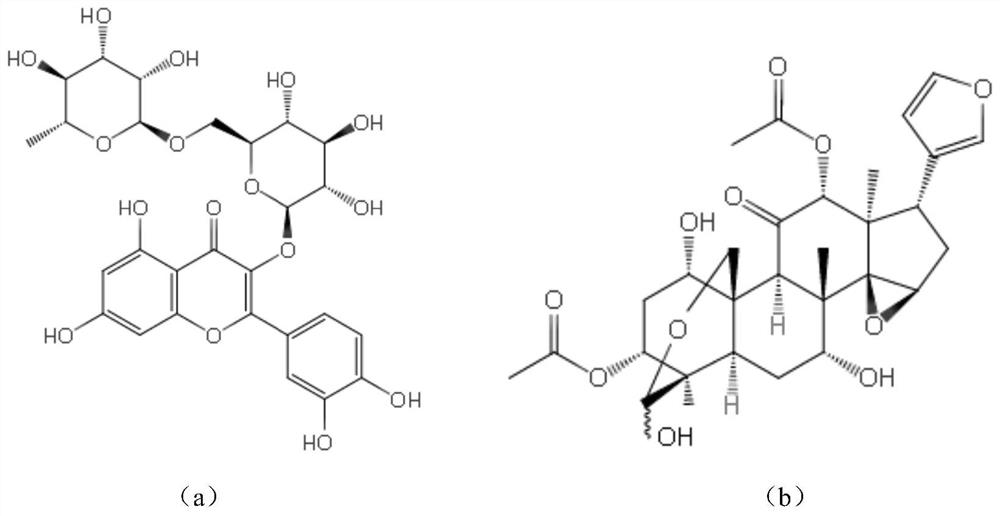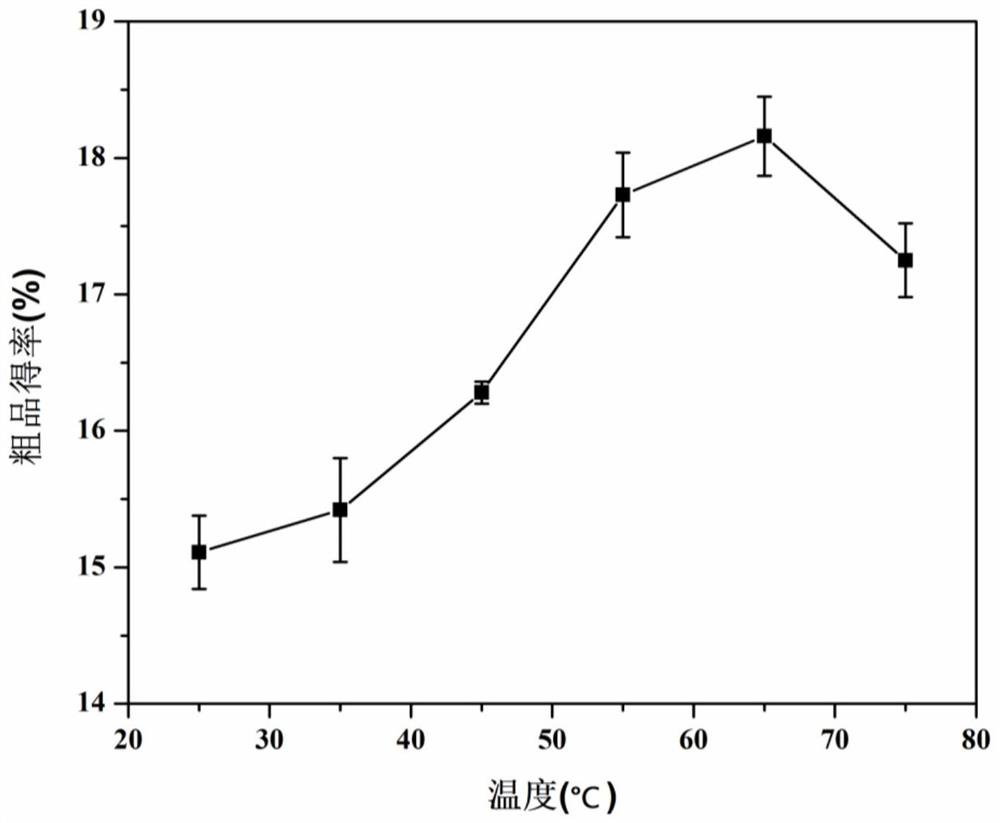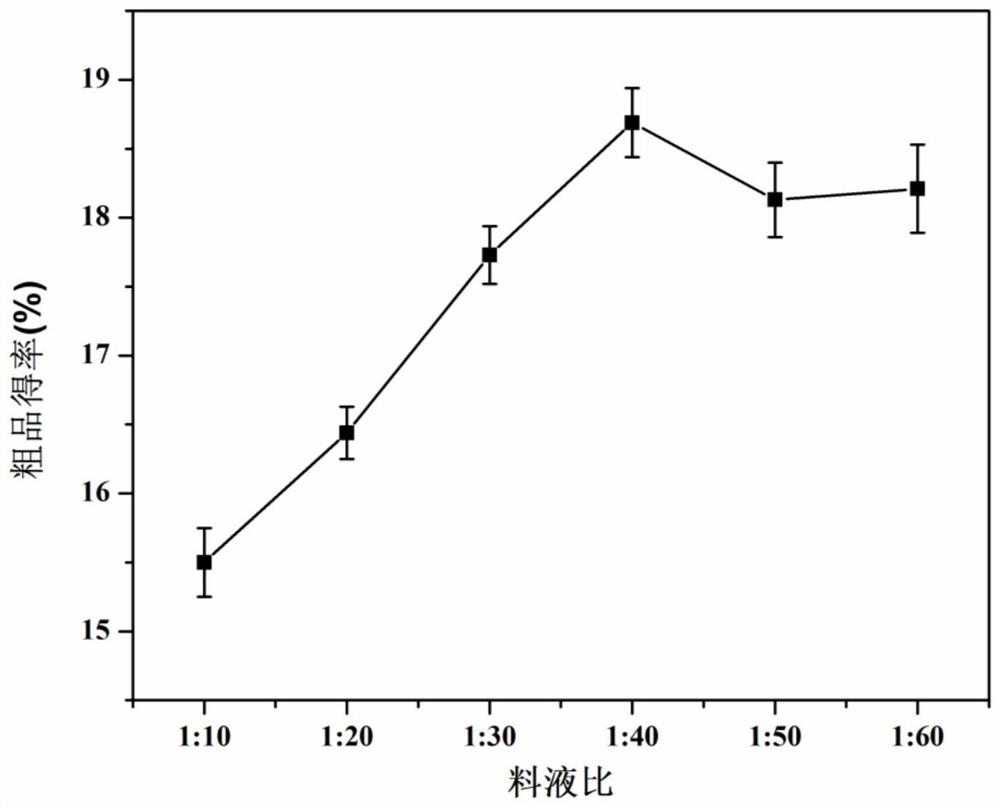Extraction method and application of melia azedarach bark pigment
A neem bark and pigment technology, applied in dyeing, chemical instruments and methods, and resistance to vector-borne diseases, can solve the problems of high cost, difficult to accurately control temperature, and difficult to increase yield, and achieve strong anti-ultraviolet performance , strong fluorescent effect
- Summary
- Abstract
- Description
- Claims
- Application Information
AI Technical Summary
Problems solved by technology
Method used
Image
Examples
Embodiment 1
[0055] A method for extracting neem bark pigment, comprising the following steps:
[0056] 10g 20 order neem bark powder is added in the mixed solvent of 400g water and ethanol (concentration of ethanol is 40%), adopt high-speed wall breaker to mix, extract; Extract pH (add sodium hydroxide solution to adjust) be 11, The extraction temperature is 65°C, and the extraction time is 60 minutes (the blade rotation speed is 42000r / min for 10 minutes, and then the blade rotation speed is reduced to 20500r / min for 50 minutes); Solid-liquid separation; then use rotary evaporation to recover ethanol and concentrate the feed solution (solid content is 4.80%), after concentration, freeze-dry (temperature is -40 ° C, time is 36h), to obtain brown powder, that is, neem bark pigment.
Embodiment 2
[0057] The optimization of embodiment 2 extraction temperature
[0058] Adjust the extraction temperature in Example 1 to be 25, 35, 45, 55, 75°C, and keep the others consistent with Example 1 to obtain the neem bark pigment.
[0059] The neem bark pigment obtained is subjected to a performance test, and the test results are shown in figure 2 ,From figure 2 Can find out: along with the rising of temperature, the crude product yield of neem bark pigment increases gradually, and the crude product yield is the lowest during 25 ℃, is 15.11%, and 65 ℃ (embodiment 1) crude product yield is the highest, is 18.77% . But the yield of crude product of neem bark pigment decreased slightly at 75℃.
Embodiment 3
[0060] The optimization of embodiment 3 solid-liquid ratio
[0061] The solid-liquid ratio (mass ratio of neem bark powder and mixed solvent) in adjusting embodiment 1 is 1: 10, 1: 20, 1: 30, 1: 50, 1: 60, and other is consistent with embodiment 1, Get neem bark pigment.
[0062] The neem bark pigment obtained is subjected to a performance test, and the test results are shown in image 3 ,From image 3 It can be seen that: when the solid-liquid ratio was 1:10, the crude product yield was the lowest, which was 15.51%, and when the solid-liquid ratio was 1:40 (embodiment 1), the crude product yield was the highest, which was 18.77%, and the solid-liquid ratio When the ratio is greater than 1:40, the difference in the yield of the crude product is small, indicating that the yield of the crude product becomes stable from the solid-liquid ratio of 1:40, and the neem bark pigment has been basically dissolved. Comprehensive consideration, the ratio of solid to liquid should be 1:4...
PUM
 Login to View More
Login to View More Abstract
Description
Claims
Application Information
 Login to View More
Login to View More - R&D
- Intellectual Property
- Life Sciences
- Materials
- Tech Scout
- Unparalleled Data Quality
- Higher Quality Content
- 60% Fewer Hallucinations
Browse by: Latest US Patents, China's latest patents, Technical Efficacy Thesaurus, Application Domain, Technology Topic, Popular Technical Reports.
© 2025 PatSnap. All rights reserved.Legal|Privacy policy|Modern Slavery Act Transparency Statement|Sitemap|About US| Contact US: help@patsnap.com



